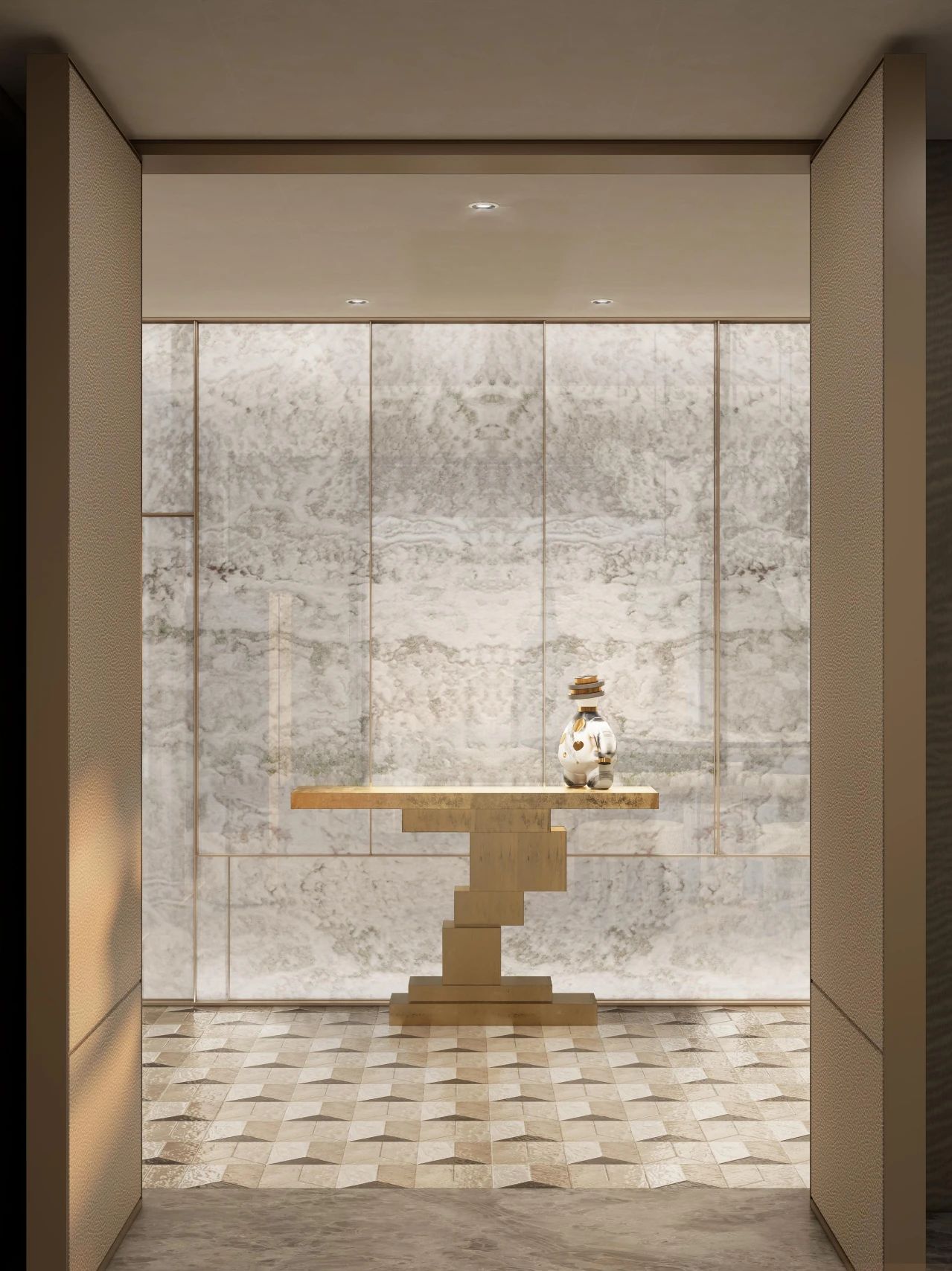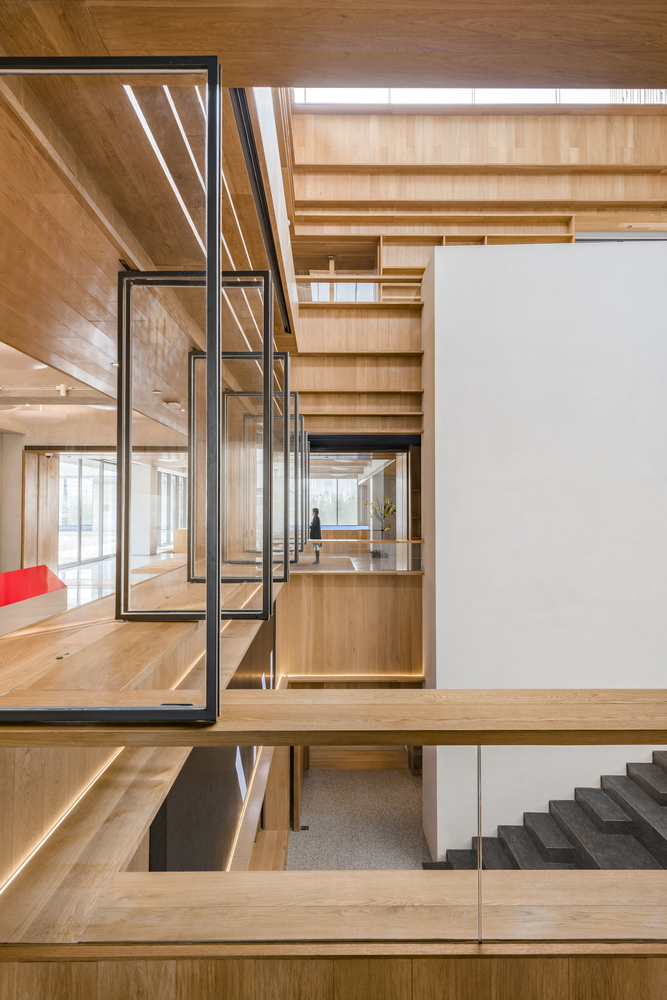House in Itami Tato Architects
2013-09-04 01:00
Text description provided by the architects. Widening interspace to utilize
在要求我们设计一所房子的同时,也有一个先决条件,即确保一个核心家庭在极其细分的地段拥有一所房子,我们很难将日本长期以来积累起来的建筑方式应用到这些土地上。我们反复试验和错误的设计,因为我们认为我们是在形成阶段,以一种新的方式。
Many of the requests to us for designing a house are accompanied with a prerequisite of ensuring a house for a nuclear family at an extremely subdivided lot, to which we cannot easily apply the manners of architecture having been accumulated for long time in Japan. We repeated trials and errors while designing as we think we are in the formative period for a new manner.
这次也不例外。对于城市房屋的这种密度,相邻房屋的外墙不互相接触,民法要求500毫米的外墙折中,形成1,000毫米宽的中间空间。
This time was not the exception as well. For this level of density of urban houses, where outer walls of the adjoining houses do not touch each other, the civil law demands 500 mm setbacks of outer walls to form interspace of 1,000 mm in width in-between those.
我们一直在思考是否能更有效地利用它。在该项目中,我们从东北邻接土地的边界线上多出了400毫米的挫折。因此,有1,400毫米宽的中间空间作为一条通道,从相邻地块的边界起,宽度为900毫米,在侧壁中间,面向中间空间放置一个入口,从而实现了尽量减少房屋内路由的空间。
We have kept thinking if it is used more effectively. In this project, we gave 400mm more setbacks from the boundary line of the north eastern adjacent land. As a result, there was 1,400mm wide interspace as a passage, which was 900mm in width from the border of the adjacent plot, utilized by placed an entrance in the middle of the side wall faced to the interspace, which realized to minimize space for routing in the house.
这一挫折使屋檐高至9米左右,避免了北侧的倾斜线。非结构墙向外推开,为壁橱等提供了空间。因此,它提供了更大的空间,包括厕所等设施,而不是从室内空间,如家具,这带来了模糊的空间感知。
The setback ensured the eave as high as about 9 m avoiding the north side slant line. Non-structural walls were pushed out outward providing space for closets,etc. Accordingly, it provided bigger space containing facilities such as a toilet than as it looked from interior space like furniture, which brought ambiguity in perception of space.
Architecture and furniture
当我有幸见到一个建筑师设计的房子时,我有时觉得设计家具是在传达信息。我不知道用“尊重原来的空间,不要带来任何不必要的东西”来概括这句话是否正确,但这似乎是一种强烈的愿望,就像说不让任何东西填满这个空间一样,这是不值的。虽然我不能说我根本没有这样的欲望,但我的目标仍然是创造一个空间,让各种各样的东西可以被带入,并在日常生活中更自由地使用。
When I have the honor of seeing an architect-designed house, I sometimes feel as if design furniture is telling messages. I wonder if it is right to summarize by saying “respect the original space and don’t bring any unnecessary things”, but it seems almost like a strong desire as much as to say not to fill the space with anything does not deserve it. Although I cannot say I don’t have such desire at all, I still aim to create space where a variety of things can be brought in and used in everyday life much more freely.
在这所房子里,建筑元素,如楼梯,洗衣房,衣橱,扶手和厕所,就像家具一样。除了这些,这里只有几层楼。因此,建筑和家具交融在一起,这些含义变得相互关联,我一直试图在房间里创造自由,就好像所有这些都是随机放置和偶然使用的。
In this house, architectural elements such as stairs, a laundry space, closets, hand rails and toilets are made as if those are furniture. Except for those, there are only floors. As such, architecture and furniture are mingled and those meanings become relative each other, in which way I keep trying to create freedom in rooms as if all of those are just randomly placed and used by chance.
我一直认为处理楼梯的方法在房子里很重要,特别是在小房子里。一般的方法之一是在一个房间的中间放置一个楼梯,两边都有分配功能。尽管它最大限度地利用了可用面积,但它是否能给人们带来丰富的空间体验,可以随时看到房子的每一寸和一层楼梯。
I always think the way of dealing with stairs is important in houses, especially in small ones. One of the general methods is to place a stair at the middle of one room allocating functions on both sides. Although it maximizes usable area, it leaves the question if it brings rich spatial experience to live seeing every inch of the house and a stair all the time.
这家餐厅的天花板是3,776毫米的高度,这是决心使楼梯下的空间作为路由使用。由于它非常薄,其余的高度被划分为1880毫米向下和1850毫米向上。虽然这些都是紧密的尺寸,你可以通过两层之间的照顾你的头。
The ceiling of the dining room in this house is 3,776 mm in height, which is determined to make the space under the staircase landing usable as routing. By making it extremely thin, the rest of the height was divided into 1880mm downward and 1850mm upward. Although those are tight dimensions, you can go through between two layers minding your head.
我认为对一所房子来说,拥有如此规模的身体是有利的。因此,餐桌被放置在一楼和一楼之间的楼梯上,给居民留下了通过的空间。当居民们在楼梯上下移动时,尸体出现并消失在桌子下面。
I think it is favorable for a house to have such a scale of physical bodies. Therefore, the dining table was placed over the stair between the ground floor and the first floor leaving space for residents to pass under it. Bodies appear and disappear under the table as residents go up and down the stair.
一旦你滑动入口门,滑进家具内部,你就会到达餐桌下面,那里面对着一面大墙,阳光从南边的窗户射进来。当你踏上小凳子的时候,你会看到白色的墙从北方轻轻地点亮。到了二楼,你走到沙发上,家具就像抽屉一样,楼梯也很薄。在走向楼上的每一步,光线条件都会随着空间的方向和大小的变化而变化。楼梯作为空间经验的编舞,为这个狭小的空间。
Once you slide the entrance door and slip into inside of furniture, you reach under the dining table, where faced to a big wall receiving sun light coming through the south window. You see the white wall softly lit from the north as you step on the small stool. To the second floor, you step on the sofa, furniture like a drawer, and the thin stair. At every steps toward upstairs, light conditions change as the direction and the size of space change. Stairs as choreography for spatial experience of this small, thin space.
由于场地位于狭小的箱体后部,车载量有限,采用轻型结构,如立柱、梁用100 mm×100 m H型钢截面、圆杆支撑、地板施工用75 mm板等。这使得钢铁材料的数量减少,建筑总成本降低到与木屋差不多的水平。
As the site is located in the back of a narrow cul-de-sac and carrying-in by vehicle was limited, the structure with light materials such as 100mm×100m H steel sections for columns and beams, braces with round bars,75mm deck plates for the floor construction was applied. Those resulted in reducing the amount of steel materials, and the total construction cost to about as same as that of a wooden house.
采用6mm平杆水平支撑和50 mm方形系杆支撑,计算了楼板的水平刚度。将不同水平的楼板固定在两端的柱子上,以保持两者之间刚度的连续性。
The horizontal stiffness of floors was acquired with horizontal bracings of 6mm flat bars and 50mm squared tie beams beneath concave parts of the deck plates. Floors on different levels were fixed to the columns at both ends so that the continuity of stiffness between those was still kept.
 举报
举报
别默默的看了,快登录帮我评论一下吧!:)
注册
登录
更多评论
相关文章
-

描边风设计中,最容易犯的8种问题分析
2018年走过了四分之一,LOGO设计趋势也清晰了LOGO设计
-

描边风设计中,最容易犯的8种问题分析
2018年走过了四分之一,LOGO设计趋势也清晰了LOGO设计
-

描边风设计中,最容易犯的8种问题分析
2018年走过了四分之一,LOGO设计趋势也清晰了LOGO设计




















































































































